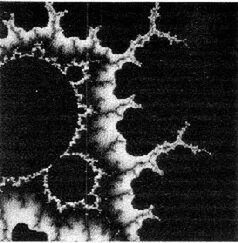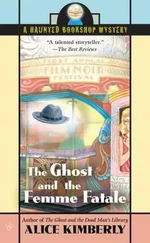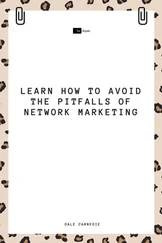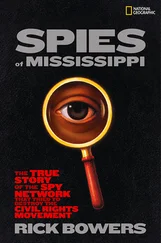The trial didn’t go well for the prosecution. The defense proved that the bombs had been built by an amateur, not a professional, which helped refute the conspiracy charges. They showed that New Situationists had never threatened or carried out any acts of violence or terrorism before, and didn’t seem to be planning any others. Only one subway station suffered serious damage; the staircase was completely destroyed, the ceiling caved in, and the tracks ripped out of their hinges in a few places. The defense also presented ample evidence that neither Kraus nor her nebulous New Situationist colleagues intended to kill anyone.
Kraus was found guilty on one count of murder in the second degree and one count of criminally malicious property damage. She was found not guilty on six other property damage counts, for the subway stations the other New Situationists had bombed, for which she wasn’t present. The presiding judge sentenced her to life in prison, with the first possibility of parole after twenty-five years.
After the trial and sentencing were complete and the media firestorm died down, the FBI decided the New Situationists no longer constituted a real threat against America and left Chicago. The government had more important terrorists to chase, ones that weren’t white, blond, suburban girls. While most of the general public moved on, a few people remained obsessed with discovering the identities of the other New Situationists: some true crime nerds, people interested in the minutiae of Chicago politics, and a teenager from New York named Miranda Young. m
The fourteen-year-old proto — Molly Metropolis lived in the North Loop and matriculated at the Chicago Lab Schools, one of the best high schools in the state. According to Molly Metropolis lore, at this time in her life Molly was working as a waitress at a now-closed Italian restaurant in Lincoln Park, using a fake I.D. to get into dance clubs North of the Loop, singing Fiona Apple — esque pop songs while accompanying herself on a small keyboard, starring in a school production of Bye Bye Birdie (which her theater teacher agreed to gender-swap just so Molly could play “Connie” Birdie), and consuming intoxicating quantities of Sex and the City . Molly never told people like James Laksy, author of her first major profile in The New York Times Magazine , that along with all the musical theater and underage tattoos, Molly fantasized about becoming a member of the New Situationists.
Molly didn’t condone the June subway bombings. In surviving AIM chats with her best friend Audrey Benton, Molly disavowed the New Situationists’ violent tactics; her lofty goal was to take over the New Situationists and steer them toward more productive ends. However, Molly’s fascination with the Weather Underground of her time was nothing compared to the full-on obsession she developed when she started reading about the original Situationists and Debord.
According to Berliner, détournement is the first Situationist idea that Molly Metropolis latched onto, like a gateway drug into a deeper, darker world. Détournement is “both the appropriation and the correction of culture as common property” [ italics mine ]. Détournement isn’t unlike today’s remix and meme cultures, which take pieces of culture, like pop songs or photos of famous actors and actresses, and shove them next to or on top of other pieces of culture or cultural references, to create something new. Sometimes these newly created objects fall into the comedic realm, like the popular Tumblr blog Feminist Ryan Gosling , which took an already existing Ryan Gosling “Hey Girl” meme (photoshopping various Ryan Gosling — esque sentiments onto pictures of Gosling, preceded by “Hey girl,” as if Gosling was speaking these things directly to his legions of female fans) and added academic feminist rhetoric. Other times, these new cultural items are created with a political purpose. Elisa Kreisinger, a self-described “pop-culture pirate,” creates remix videos of popular TV shows, re-cutting scenes from Mad Men and Sex and the City to reform the narratives, creating new feminist and queer stories out of the source materials.
Musicians like Greg Gillis, who creates remix music under the name Girl Talk, and writers like David Shields in his book Reality Hunger , are modern détourneurs . Molly practiced détournement every time she drew a gold circle on her forehead, explicitly referencing David Bowie’s Ziggy Stardust phase, or stole vocal tricks from Britney Spears, copying the iconic “oh baby, baby” that opened Britney’s first very single “… Baby One More Time” for the bridge of her Cause Célèbrety album cut “Rewind, Repeat.”
The Situationists began practicing détournement by détourning literature, political theory, visual art, and film. Usually they practiced détournement for political reasons, but occasionally they wielded the practice for personal causes. Once, when Debord and the SI were low on funds, Debord asked Bernstein to write a commercial novel with the intention of making a bit of money to fund further Situationist endeavors. She called her two novels of semiautobiographical fiction “ détournements of literature, life and love.” (They’re also delightful little reads, though somewhat maligned by both the author and her husband.)
The Situationists took détournement very seriously. They practiced what they preached, freely offering up the contents of their published writing in the Internationale Situationniste for anyone to use and/or alter, without consent or acknowledgement. Détournement wasn’t plagiarism, stealing an idea to pass it off as one’s own. Nor was it quotation, which acknowledged a boundary between various elements an artist or writer wanted to fuse together. Détournement was like welding: two pieces of steel melted, reformed into one singular object, then cooled to solidify the bonds, rendering the prior separation between the previously disparate pieces not just invisible, but also irrelevant.
Détournement was also a political act against corrupt culture, which they called “The Spectacle.” To détourn maps and novels was to raid culture, like politically motivated vandalism, like graffiti. In Debord’s most famous text, The Society of the Spectacle , he described a world and culture corrupted by capitalism, sponsored by business and bureaucracy, creating complacency in the masses rather than creativity. The Spectacle removes authenticity from creation, Debord wrote, and needs to be destroyed. Détournement was the best weapon against it.
Reading The Society of the Spectacle and Debord’s various writings about détournement , Molly took special note of something Debord wrote just before he began to shift the Situationists away from aesthetics and toward politics: “To reach this superior cultural creation — what we call the Situationist game — we now think it is necessary to be an active force in the actual sphere of this era’s culture (and not on the fringes of it, as we cheerfully were …)” nWhen Debord talked about being an “active force in the actual sphere” of culture, he meant the Situationists should become a political action group. When Molly read it, she thought about becoming a pop star.
Molly recognized the Situationists’ somewhat hypocritical relationship with mass culture. On one hand, they distained and disparaged the Spectacle, and considered celebrity the human incarnation of it. In Society of the Spectacle , Debord wrote:
The celebrity, the spectacular representation of a living human being, embodies this banality by embodying the image of a possible role. Being a star means specializing in the seemingly lived … The agent of the spectacle placed on stage as a star is the opposite of the individual, the enemy of the individual in himself as well as in others … The admirable people in whom the system personifies itself are well known for not being what they are. o
Читать дальше












